History of Rosh Hashanah
From Giftypedia
Rosh Hashanah is a Judaica holiday which means "Head of the Year" and is commonly known as the Jewish New Year takes place during the Hebrew month of Tishri* (September or October). The holiday commemorates the anniversary of the creation. According to tradition, it is believed that God opens his book of life and observes his creatures, deciding their fate for the following year. This holiday is considered to be a solemn and holy occasion because of the judgment that is taking place during this time.
Note: All the months follow the phases of the moon, and the years are adjusted so that the festivals stay in their appropriate seasons.[1]
Origins of Rosh Hashanah
The holiday is referenced in Leviticus 23:23-25, in which God tells Moses to tell the Israelites to mark the first day of the seventh month of the year as a day of rest. The day was also proclaimed by the blast of a trumpet (a Shofar). Rosh Hashanah assumed additional importance following the return of the Jews from exile in Babylon. After the first group of exiles had arrived in Jerusalem following the Edict of King Cyrus of Persia, which allowed exiled Jews to return to their homeland, they celebrated Sukkot (the Festival of Booths), beginning on the first day of the seventh month (Ezra 3:4-6).
In spite of their return from exile, a large number of Jews remained in Babylon. The beginning of the seventh month eventually became the beginning of the New Year under Babylonian influence. However, there are some indications that there were competing traditions in ancient Israel regarding the beginning of the year.
The significance of Rosh Hashanah have remained more or less the same since rabbinic times, although the liturgy associated with the holiday has developed greatly since those ancient days.
Holiday Traditions
Customs of Rosh Hashanah evolved based on the socio-economic or ethnic situation in which Jews of various societies found themselves. Some customs emerged in some communities while not in others.
- Tashlich: Coming from the root word meaning "to cast away", Tashlich is the practice of which Jews go to a flowing body of water to "wash away" their sins. At the water, several prayers are recited. Tashlich occurs in the afternoon of the first day of Rosh Hashanah or the second day if the first falls on Shabbat (Saturday). Another reason for the use of a "live" body of water is that there are usually fish present. Fish never close their eyes, and that is a reminder to Jews of the ever-watchful eyes of God who records and remembers everything.
- Sounding of the Shofar: One of the most important observances of this holiday is hearing the sounding of the shofar. The shofar is a ram's horn which is blown somewhat like a trumpet. The sound from the blowing of the shofar must be heard directly[2] . The shofar is not blown if the holiday falls on Shabbat. A shofar may be made from the horn of any animal, although a ram's is preferable.
- Lighting Candles: Candles are lit on the first night of Rosh Hashanah just before sundown. On the second night, candles should be lit immediately after nightfall, kindled by an existing flame. Women and girls generally lights the candles while reciting a traditional blessing. The number of candles to light varies on preference and tradition[3].
- Greetings: On the first night of Rosh Hashanah, people exchange the greeting "May you be inscribed and sealed immediately for a good life." In some communities, it is considered improper to say this after the first day because is implied that you may not see that person as righteous.
- Food: Two loaves of bread that are dipped in honey and eaten by people. Honey is a symbol of having a sweet year. Apples dipped in honey are also eaten. Other traditional foods during this period include pomegranates, beets, leeks, green beans, squash, and even in some places, the head of a sheep or fish are eaten.
- New Clothing: At least one new piece of clothing is purchased, especially for children, and wives get clothing or jewelry. Men are often given a white robe-like shirt called a kittel, which should be solid white. White clothes are frequently worn to Rosh Hashanah services.
- Sleeping: Naps are not to be taken in the afternoon during this period, as Rosh Hashanah is meant as a day of reflection and prayer.
Gift Ideas for Rosh Hashanah
Gifts that show the expression for a "sweet year" traditionally include items such as:
- Kosher gift baskets that includes smoked salmon, sweets, nuts and chocolate.
- Dried fruits such as figs and dates.
- Fruit baskets that include apples.
- Apple shaped or apple themed gifts.
- Sweet breads like babka or pastries like rugelach.
- Food made with honey, honey jars and dippers, honey comb.
- Children's toys such as plastic shofar horns, or sets of plush or wooden items related to the holiday.
- Items made in Israel are an especially thoughtful Rosh Hashanah gift.
- Send a holiday card to friends and relatives far away.
Related Guides
Jewish Holidays
- History of Rosh Hashanah
- History of Ten Days of Repentance
- History of Yom Kippur
- History of Sukkot
- History of Hanukkah
- History of Purim
- History of Passover
- History of Shavu'ot
- History of Shemini Atzeret
References
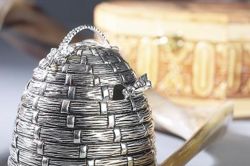
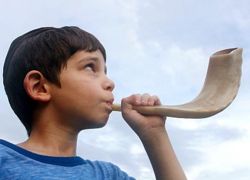
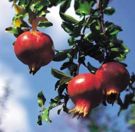
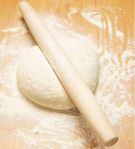
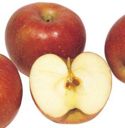
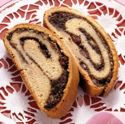
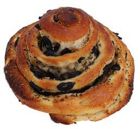
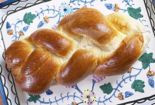

 Printer Friendly
Printer Friendly
